Biology

Dec 31st, 2025 - Follow Earth on Google Reconstructing an ancient animal like Deinosuchus is rarely about a single, dramatic fossil. Most of the time, information comes from the slow accumulation of fragments, careful comparisons, and a willingness to revise ideas when new evidence appears. Decades of fieldwork across North America has steadily transformed scientists' understanding of the size, behavior, and evolutionary relationships of extinct giant crocodilians and their early relatives. That long process ... [Read More]
Source: earth.com

Dec 31st, 2025 - Follow Earth on Google Spruce bark is packed with phenolic compounds that defend the tree against invading fungi. Those chemicals live in the phloem, the inner bark that beetles chew through as they tunnel. A team at the Max Planck Institute for Chemical Ecology in Jena asked a sharp-edged question: when bark beetles swallow the tree's chemical weaponry, can they repurpose it to protect themselves against their own pathogens? Beetles upgrade plant toxins Using high resolution mass ... [Read More]
Source: earth.com
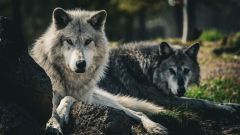
Dec 30th, 2025 - It's quick and easy to access Live Science Plus, simply enter your email below. We'll send you a confirmation and sign you up for our daily newsletter, keeping you up to date with the latest science news. Previous research on the effect of wolves on the food web has been criticized, raising questions about the predator's role in the Yellowstone ecosystem. Facebook X Whatsapp Reddit Flipboard Join the conversation Add us as a preferred source on Google Newsletter Subscribe to our newsletter Over ... [Read More]
Source: livescience.com

Dec 30th, 2025 - Follow Earth on Google For decades, scientists thought the oceans took tens of millions of years to recover after Earth's worst mass extinction. Most marine life was gone. Complex ecosystems were expected to rebuild slowly. A dense layer of fossilized bones in the Arctic tells a different story. Just three million years after the catastrophe, an offshore ecosystem packed with predators and prey was already in place. The fossils come from Spitsbergen in the Svalbard archipelago. There, dark ... [Read More]
Source: earth.com
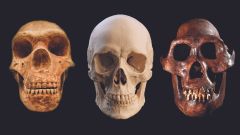
Dec 30th, 2025 - It's quick and easy to access Live Science Plus, simply enter your email below. We'll send you a confirmation and sign you up for our daily newsletter, keeping you up to date with the latest science news. Facebook X Whatsapp Reddit Flipboard Join the conversation Add us as a preferred source on Google Newsletter Subscribe to our newsletter Neanderthals have fascinated scientists since they were first discovered in the 19th century. Their long heads and low brow ridges initially convinced ... [Read More]
Source: livescience.com
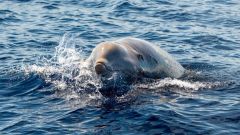
Dec 30th, 2025 - Beaked whales have rarely been seen. Now scientists are using underwater sounds to help identify these mysterious creatures. On a bright, almost windless day in early June 2024, scientist Elizabeth Henderson was aboard a boat off the sun-drenched coast of Baja California. She and her team perched halfway up the vessel's mast, wielding powerful binoculars and peering round at the calm water. They were looking for beaked whales, a group of species that aren't often sighted because they dive ... [Read More]
Source: bbc.com
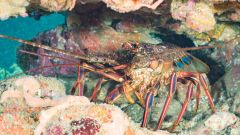
Dec 30th, 2025 - Gathering for mutual defense puts young spiny lobsters at risk of predators. Lobsters are generally notable for their large claws, which can serve as a deterrent to any predators. But there's a whole family of spiny lobsters that lack these claws. They tend to ward off predators by forming large groups that collectively can present a lot of pointy bits towards anything attempting to eat them. In fact, studies found that the lobsters can sense the presence of other species-members using ... [Read More]
Source: arstechnica.com
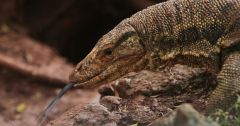
Dec 29th, 2025 - In 2016, Museum Macaulay Curator Roger Benson was exploring limestone blocks in the village of Elgol in Southern Skye. His colleagues asked him to give up, believing that they had left no spot unexplored and weren't likely to discover anything valuable. Benson had only walked about 15 feet when his attention fell on something unusual etched into a block of micritic limestone. They extracted the block and couldn't believe what they had just found: the skeleton of a prehistoric reptilian creature ... [Read More]
Source: greenmatters.com
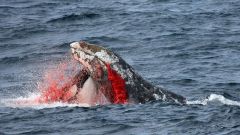
Dec 29th, 2025 - It's quick and easy to access Live Science Plus, simply enter your email below. We'll send you a confirmation and sign you up for our daily newsletter, keeping you up to date with the latest science news. Facebook X Whatsapp Reddit Flipboard Join the conversation Add us as a preferred source on Google Newsletter Subscribe to our newsletter In March 2019, researchers off the coast of southwestern Australia witnessed a gruesome scene: a dozen orcas ganging up on one of the biggest creatures on ... [Read More]
Source: livescience.com
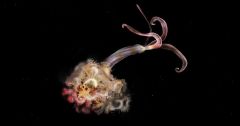
Dec 29th, 2025 - The sudden disappearance of species may raise concern, more so if the organism is a blessing in disguise for nature. Recently, a valuable marine species went missing, causing alarm among scientists. Osedax, the zombie worm or "the bone devourer," plays a crucial role in the marine ecosystem, and its disappearance can disrupt the decomposition cycle. The deep-sea creature survives by feeding on the bones of dead whales. Despite lacking a mouth or digestive system, they use root-like structures ... [Read More]
Source: greenmatters.com

Dec 29th, 2025 - Follow Earth on Google Before whales, great whites, or the bus-sized megalodon prowled the seas, a colossal shark was already ruling Cretaceous waters off what's now northern Australia. New research on a handful of palm-sized vertebrae found near Darwin shows that mega-predators from the modern shark lineage got big far earlier than anyone expected, about 115 million years ago. An apex predator arrives early The fossils belong to a lamniform shark, the same broad group that includes ... [Read More]
Source: earth.com
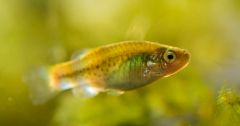
Dec 29th, 2025 - A tiny fish that was presumed extinct has reemerged as a sign of hope. After 20 years of no-show, the rediscovery of Moema claudiae, a rare seasonal killifish, has restored faith in conservation efforts. The rare species was found in a small and temporary pond located in Bolivia within a segment of forest, surrounded by farmlands. Two decades ago, the species wasn't spotted after its habitat was destroyed to create agricultural grounds . When repeated searches couldn't locate and restore ... [Read More]
Source: greenmatters.com

Dec 27th, 2025 - The beaver who would one day be named June was simply doing what beavers do. But her dams, built around her lodge in Utah's Bear River Mountains, ran afoul of a rancher. He said the flooding caused his sheep to get stuck in the mud. That landed the furry engineer in the unfortunate category of "nuisance beaver." In most places around the country, she would have been killed. Instead, she was enlisted: strategically relocated and released in an effort to restore degraded streams elsewhere in the ... [Read More]
Source: sltrib.com
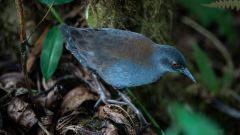
Dec 27th, 2025 - Freed from the threat of invasive predators, Galapagos birds are performing astonishing feats of return and innovation – 200 years after Charles Darwin visited the archipelago. For almost 200 years, the Galapagos rail had been missing from Floreana. Thought to be extinct on this small, inhabited island in the Galapagos archipelago, the shy, near-flightless bird is still found on some of the other islands. But Charles Darwin was the last person to record a sighting of one on Floreana, when ... [Read More]
Source: bbc.com

Dec 26th, 2025 - The findings might overturn a widely held belief that only females pose a disease risk to people, though more research is needed. Reading time 4 minutes The mosquito scourge might somehow be even worse than we thought. Intriguing research out this month finds it isn't just females that are capable of sucking our blood—males can apparently do it, too. Scientists from Pennsylvania State University and other institutions made their case in a preprint released last week on the website ... [Read More]
Source: gizmodo.com
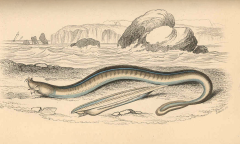
Dec 26th, 2025 - Nautilus Members enjoy an ad-free experience. . S mell plays a crucial role in our daily lives, and it helped propel our evolution, too. Hundreds of millions of years ago, this sense enabled our early mammal ancestors to find food, communicate, and escape predators. Nautilus Members enjoy an ad-free experience. Mammals came onto the scene more than 200 million years ago, and several features in their brains grew larger than those of their ancestors—including the olfactory bulb, a ... [Read More]
Source: nautil.us